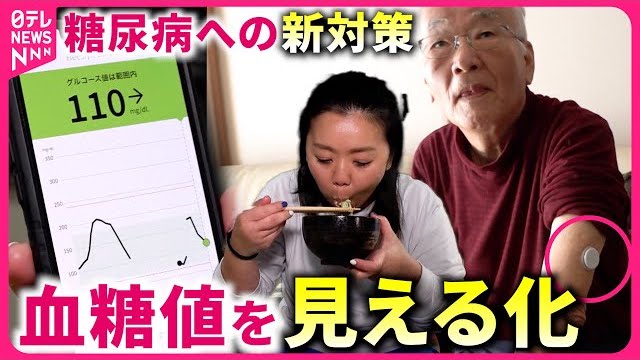TOKYO, Feb 12 (News On Japan) - As winter approaches, a spotlight is cast on diabetes, a condition affecting millions, and the innovative measures being adopted to combat it.

Last December, Takeshi Nishimura visited the diabetes department at the International University of Health and Welfare Mita Hospital in Tokyo, continuing his battle with diabetes that began in his 40s. A regular check-up showed his blood sugar level at 154, notably higher than in the summer, aligning with Dr. Masaya Sakamoto's observation that blood sugar levels tend to rise from autumn into winter.
With fasting blood glucose levels of 126 or above marking the diagnostic criterion for diabetes, approximately one in four adults over the age of 20 is either affected by or at risk of developing this condition. The primary cause is the impaired function of insulin, the hormone responsible for lowering blood sugar. Prolonged high blood sugar levels can damage blood vessels and lead to serious complications affecting the eyes, nerves in the hands and feet, and kidneys.
Dr. Sakamoto noted that the increase in food intake during autumn and reduced physical activity in winter, leading to weight gain, makes this season a particularly risky period for the worsening or onset of diabetes. Research indicates a tendency for blood sugar levels to increase during the winter months of December to February.
Addressing the lifestyle factors that contribute to this seasonal trend is crucial. Nishimura has made significant changes to his diet on Dr. Sakamoto's advice, focusing on reducing carbohydrate intake and incorporating more vegetables and fiber-rich foods like yams that slow sugar absorption. Dr. Sakamoto emphasizes the importance of reducing salt intake to prevent overeating and ideally reducing meal portions as well.
Another key strategy is engaging in physical activity after meals. According to Dr. Sakamoto, blood sugar levels peak one and a half to two hours post-meal, making it essential to move around during this window. Nishimura has adopted the practice of walking briskly after meals and using stairs instead of escalators at stations to increase his physical activity.
An easily adopted lifestyle change is bathing after dinner, which can increase metabolism and assist in blood sugar management, especially during the colder months.
However, recognizing the immediate effect of these lifestyle adjustments on blood sugar levels can be challenging. This is where the "visualization" of blood sugar comes into play. Continuous glucose monitors (CGM), covered by insurance, allow for 24-hour blood sugar tracking and provide data accessible via smartphone. This technology offers insights into how different foods affect blood sugar levels, aiding in dietary choices.
Dr. Mitsuru Oosugi is working on creating a large-scale database of over 98,000 diabetes patients to validate the effectiveness of medications in managing blood sugar levels. One of his patients, who benefited from blood sugar visualization, managed to control his diabetes to the extent of reducing medication. This patient's diet includes innovative low-carbohydrate meals, like tofu and cauliflower rice with low-sugar curry and cheese.
Dr. Oosugi emphasizes that while medication is a supportive measure, the crucial factors are diet and physical activity. As winter increases the risk of elevated food intake and reduced exercise, small lifestyle improvements can significantly reduce the risk of diabetes, according to healthcare professionals.
Source: 日テレNEWS















